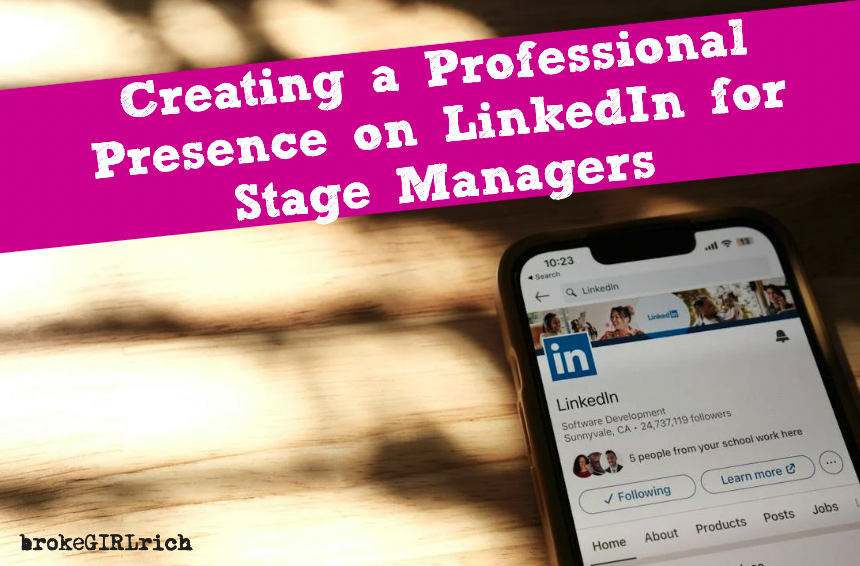
Creating a Professional Presence on LinkedIn for Stage Managers | brokeGIRLrich
While LinkedIn may not be the primary tool for finding arts jobs, as someone involved in hiring, I do find it a bit odd if a candidate doesn’t have a LinkedIn profile.
I enjoy researching the career trajectories of other stage managers, analyzing the paths of those who hold roles I aspire to.
What should you prioritize when crafting your LinkedIn profile? Let’s break it down simply.
Your profile photo and background image are the first things visitors notice.
For your profile photo, choose a recent image that emphasizes your face. I use these pictures to confirm if I recognize you from prior meetings, aiding me in recalling your appearance when we meet for interviews or other engagements.
While it’s often advised to present a professional image, the arts can complicate this notion. For instance, if you’re aiming for a role in a production like The Lion King and have vibrant purple hair with numerous piercings, you should consider what other Disney stage managers’ photos look like, as their corporate policies may have specific dress codes.
Your background image should reflect your work—perhaps dynamic shots from productions you’ve participated in (if permitted by the photographers/production) or images of your organized paperwork (keeping confidentiality in mind).
I typically choose a picture of a French Scene document because it’s visually interesting without being overwhelming.
Following your profile picture is your name and a professional tagline. This defaults to your most recent job title, but feel free to customize it to convey your broader expertise.
Your About section is next. Admittedly, I often redirect people to my personal website for a more comprehensive portfolio, but experts suggest this should be a solid paragraph detailing your skills, accomplishments, and the value you bring to potential employers.
A helpful strategy is to leverage ChatGPT. Share your resume with it, and request three different versions of your About section. Review and refine the one that resonates most with you.
As a hiring manager, I place significant importance on your Experience section. This area allows you to elaborate on your work more than a standard resume typically permits. For example, if your resume mentions a production of Romeo & Juliet, but it was a grand show in a distinctive venue, consider including images or links to reviews to provide context.
If you are a strong job candidate, I will thoroughly examine your profile. Detailing job responsibilities in the Experience section can bolster my confidence when considering you for interviews or job offers. Include relevant technologies and specific duties like show calling or scheduling.
After the Experience section is Education. Once you have ample experience, the specifics of your education become less critical, though I may glance at it to see if you attended a program I’m familiar with.
You can then list any Certifications. As a stage manager, it’s unlikely you wouldn’t have a few—especially in basic first aid and CPR. If you’ve pursued unique qualifications, like SCUBA certification as part of your goal to work with Cirque du Soleil, be sure to highlight them here.
The Skills section is somewhat beyond your control since others endorse your abilities. However, it’s beneficial to have a few endorsements, which can be easily gathered from your network.
Recommendations are also valuable, albeit more time-consuming to obtain. Don’t hesitate to ask colleagues for a recommendation; many will be willing to help if you express that you’re enhancing your LinkedIn profile.
Courses can also be included to emphasize skills that might not warrant full certifications. This section could be particularly beneficial for college students, though you might want to revise it post-graduation to remove course details.
Complete your profile with any Honors & Awards and badges from organizations you belong to, as this section can help you identify common connections that could be advantageous.





